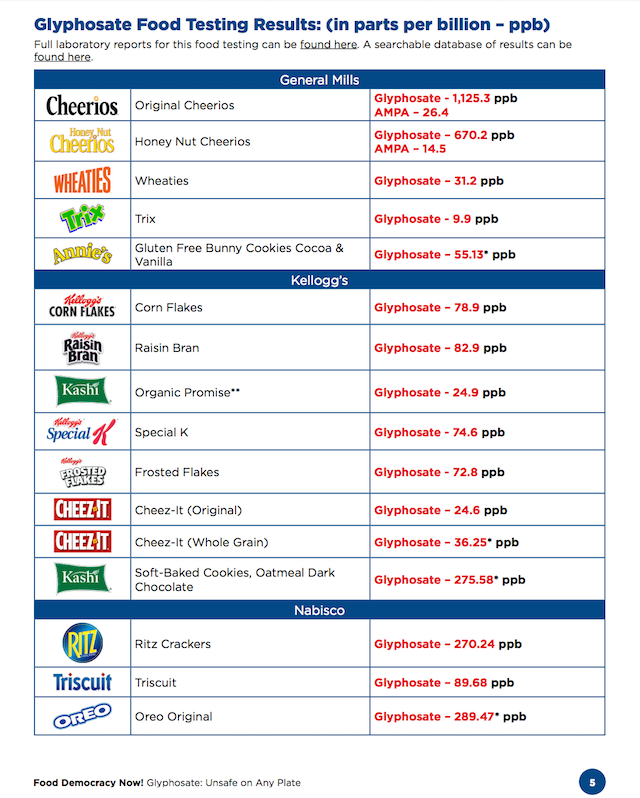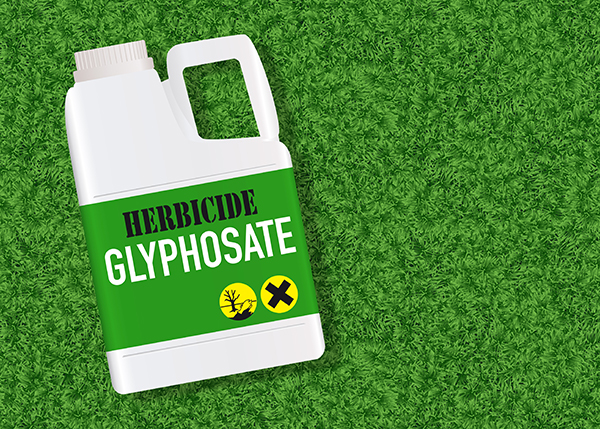
Recently, the International Agency for Research on Cancer (IARC) declared glyphosate as a "probable carcinogen." As more health risks associated with glyphosate exposure start to emerge, the European Union remains uncertain whether it will renew its authorization of glyphosate in commercial products in Europe.
Furthermore, recent safety testing has shown that glyphosate residues can cause harm to human health, even at ultra-low levels. While the evidence is clear, the U.S. authorities, unfortunately, keep allowing this dangerous toxin to end up in our food chain at worrying levels. Safety testing of glyphosate residues in Roundup-sprayed crops is often ignored and unreliable.
While Monsanto has continuously claimed that Roundup is harmless to our health, multiple studies are painting a different picture. Regular exposure to glyphosate has been linked to chronic conditions such as autism, Crohn’s disease, allergies, depression, cancer, multiple sclerosis, and infertility. (RELATED: Stay informed about more glyphosate news at Glyphosate.news.)
Glyphosate found in many processed foods
Anresco Laboratories in San Francisco, an FDA-registered food safety lab, recently conducted their own research to see whether glyphosate can be found in commonly consumed processed foods. And their tests revealed the worst. Previous research has shown that glyphosate or glyphosate residues of only 0.05 parts per billion (ppb) can cause damage to at least 4,000 genes, while 10 ppb may cause serious health effects, such as kidney and liver damage. Anresco’s results, however, indicated that some of the tested foods had up to 1,000 times that amount.
The testing and analysis were requested by Food Democracy Now! and The Detox Project, who bundled the results in a 29-page report called “Glyphosate: UNSAFE ON ANY PLATE." According to the report, U.S. regulators currently allow a very high level of daily glyphosate residues in our food. The authors hope their report can serve as a strong wake-up call for all Americans to reconsider their consumption of some of their favorite processed foods.
Furthermore, Food Democracy Now! has called for a federal investigation into the damaging effects of glyphosate and the relationships between the industry and the regulators that allow these toxins to end up in our food chain.
Below you’ll find an overview of common brand names and the amount of glyphosate that was found in some of their products, with General Mills Cheerios topping the list with an astonishing 1,125.3 ppb.
[caption id="attachment_3950" align="aligncenter" width="640"] Chart source: Food Democrazy Now! - Glyphosate: UNSAFE ON ANY PLATE.[/caption]
Chart source: Food Democrazy Now! - Glyphosate: UNSAFE ON ANY PLATE.[/caption]
[caption id="attachment_3949" align="aligncenter" width="640"] Chart source: Food Democrazy Now! - Glyphosate: UNSAFE ON ANY PLATE.[/caption]
Chart source: Food Democrazy Now! - Glyphosate: UNSAFE ON ANY PLATE.[/caption]
To steer your family clear of glyphosate-tainted foods, eliminate all processed foods from your daily diet. Always opt for whole organic foods, locally or homegrown if possible. Only then you can be absolutely sure that you are feeding your family a healthy, toxin-free diet.
Sources:
Please contact us for more information.























